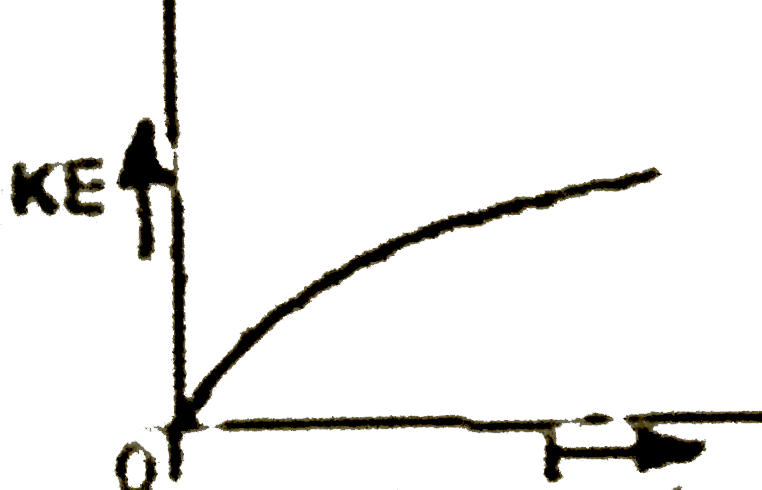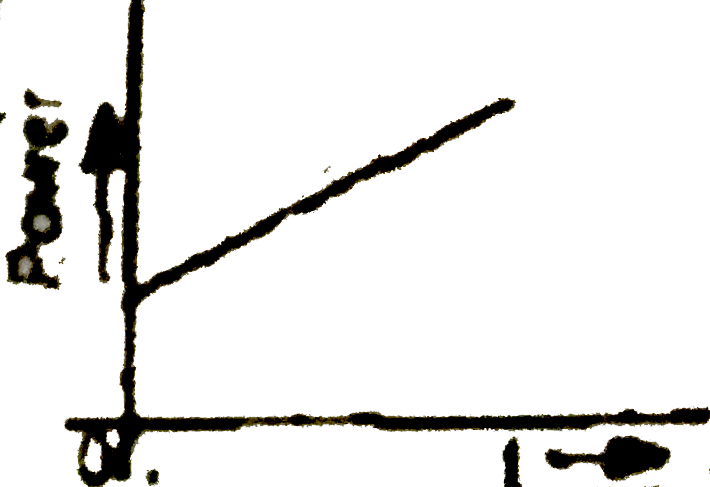A block is resting over a smooth horizontal plane. A constant horizontal force starts acting on it at t=0. Which of the following graph is correct:




The correct Answer is:C
Step by step video, text & image solution for A block is resting over a smooth horizontal plane. A constant horizontal force starts acting on it at t = 0. Which of the following graph is correct: by Physics experts to help you in doubts & scoring excellent marks in Class 11 exams.
Updated on:21/07/2023Topper's Solved these Questions
- WORK AND ENERGYBook:ANURAG MISHRAChapter:WORK AND ENERGYExercise:Level 2
Explore 18 Videos
- WORK AND ENERGYBook:ANURAG MISHRAChapter:WORK AND ENERGYExercise:Level 3
Explore 34 Videos
- WORK AND ENERGYBook:ANURAG MISHRAChapter:WORK AND ENERGYExercise:Eample
Explore 47 Videos
- UNIT AND DIMENSIONSBook:ANURAG MISHRAChapter:UNIT AND DIMENSIONSExercise:Matching Type Problem
Explore 4 Videos
Similar Questions
A thin uniform rod AB of mass m and length L is placed on a smooth horizontal table. A constant horizontal force of magnitude F starts acting on the rod at one of the ends AB, Initially, the force is perpendicular to the length of the rod. Taking the moment at which force starts acting as t=0, find.
(a) Distance moved by centre of mass of the rod in time t0.
(b) Magnitude of initial acceleration of the end A of the rod.
View SolutionA block of mass'm' it kept over the smooth surface of the plank of mass M. the plank of length l is kept over the smooth horizontal surface. A constant horizontal force F is applied onto the plank as shown in figure. Calculate the time after which the block falls off the plank?

View Solution
Knowledge Check
A particle is resting over a smooth horizontal floor. At t=0, a horizontal force starts acting on it. Magnitude of the force increases with the time according to law F=at, where 'a' is a constant. For figure which of the following statement is/are correct ?
 ACurve 1 can be the plot of acceleration against timeBCurve 2 can be the plot of velocity against timeCCurve 2 can be the plot of velocity against accelerationDCurve 1 can be the plot of displacement against time
ACurve 1 can be the plot of acceleration against timeBCurve 2 can be the plot of velocity against timeCCurve 2 can be the plot of velocity against accelerationDCurve 1 can be the plot of displacement against timeA particle is resting over a smooth horizontal floor. At t=0, a horizontal force starts acting on it. Magnitude of the force increases with the time according to law F=at, where 'a' is a constant. For figure which of the following statement is/are correct ?
 ACurve B indicates velocity against timeBCurve B indicates velocity against accelerationCCurve A indicates acceleration against timeDNone of these
ACurve B indicates velocity against timeBCurve B indicates velocity against accelerationCCurve A indicates acceleration against timeDNone of theseA particle is resting over a smooth horizontal floor AT t = 0, a horizontal force starts acting on it. Magnitude of the force increases with time F = kt, where k is a constant. The two curves are drawn for this particle as shown
 ACurve-1 shows acceleration versus timeBCurve-2 shows velocity versus timeCCurve-2 shows velocity versus accelerationDCurve-1 shows velocity versus acceleration
ACurve-1 shows acceleration versus timeBCurve-2 shows velocity versus timeCCurve-2 shows velocity versus accelerationDCurve-1 shows velocity versus acceleration
A uniform plank is resting over a smooth horizontal floor and is pulled by applying a horizontal force at its one end. Which of the following statements are not correct?
View Solution
Two blocks connected by a spring rest on a smooth horizontal plane as shown in Fig. A constant force F start acting on block m2 as shown in the figure. Which of the following statements are not correct?
View SolutionTwo blocks connected by a spring rest on a smooth ITIM horizontal plane as shown in figure. A constant force F starts acting on block m2 as shown in the figure. Which of the following statements are not correct?

View SolutionA block is resting over a rough horizontal floor. At t=0 a time -verying force starts acting on it , the force is described by equation F=kt where k is constant and r is in seconds Marks the cerrect statement (s) for this situation .

View SolutionA uniform rod is resting freely over a smooth horizontal plane. A particle moving horizontally strikes at one end of the rod normally and gets stuck. Then
View Solution

